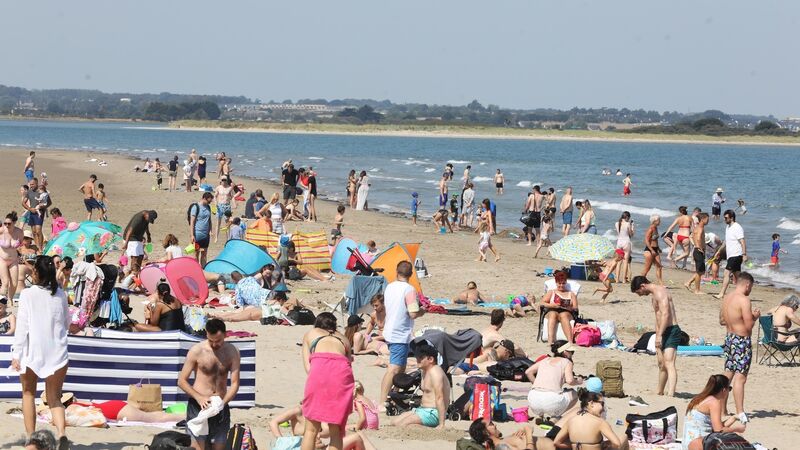Days exceeding 39C to be up to 10 times more common in Western Europe by 2100

Ireland recorded its hottest temperature in more than 135 years when it reached 33C in July. Picture: Leah Farrell / RollingNews.ie
Days exceeding 39C will be three to 10 times more common in Western Europe by the end of the century, even if global warming is curbed to levels agreed in the historic Paris Agreement.
That is according to new research by scientists at the University of Washington, who also estimate people living near the equator will find themselves in dangerously high heat for half of the year.
The study, published in the , found even if countries manage to meet the Paris Agreement goal of keeping warming to 2C, crossing the “dangerous” threshold will be three to 10 times more common by 2100 in the US, Western Europe, China and Japan.
Dangerous days could double by 2100 in the tropics, covering half the year, they found. Dangerous heat is defined by the US National Weather Service as 39.4C, while extremely dangerous is 51C, or unsafe for people to be in for any amount of time.
The Paris Agreement, a legally binding international treaty on climate change, was adopted in 2015 in order to limit global warming to well below 2C, or preferably to 1.5C, compared to pre-industrial levels.
Lead author of the new study, Lucas Vargas Zeppetello, said: "The record-breaking heat events of recent summers will become much more common in places like North America and Europe. For many places close to the equator, by 2100 more than half the year will be a challenge to work outside, even if we begin to curb emissions.
"Our study shows a broad range of possible scenarios for 2100. This shows that the emissions choices we make now still matter for creating a habitable future.”
Conditions deemed as unsafe for humans were calculated with the likes of boiler room work in mind, but it will now apply to outside because of human-induced global warming.
Dangerous conditions "were not thought of as conditions that would happen in outdoor, ambient environments, but we are seeing them now", Mr Vargas Zeppetello said.
Western Europe is still recovering from two major extreme heatwave events over the summer months, with severe drought conditions and fires causing havoc in a range of countries.
Ireland recorded its hottest temperature in more than 135 years when it reached 33C in July, while Britain obliterated its own record by exceeding 40C in a number of areas.
A worse-case scenario for people, reaching the extremely dangerous 51C, could become common in places like India and the sub-Sahara if emissions go unchecked, the study found.
Mr Vargas Zeppetello said: "It’s extremely frightening to think what would happen if 30 to 40 days a year were exceeding the extremely dangerous threshold.
"These are frightening scenarios that we still have the capacity to prevent. This study shows you the abyss, but it also shows you that we have some agency to prevent these scenarios from happening.”
Study co-author David Battisti, a professor of atmospheric sciences at the University of Washington, said the number of days with dangerous levels of heat in the mid-latitudes — including the southeastern and central US — will more than double by 2050.
"Even for the very low-end estimates of carbon emissions and climate response, by 2100 much of the tropics will experience ‘dangerous’ levels of heat stress for nearly half the year," he added.
CLIMATE & SUSTAINABILITY HUB












